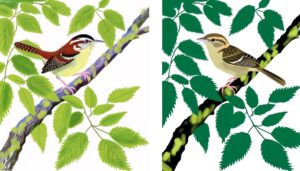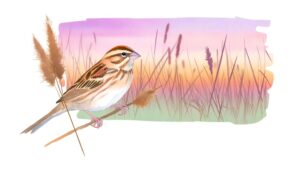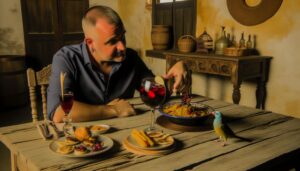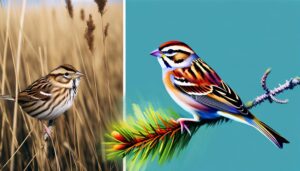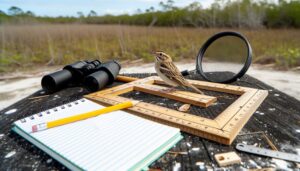Creative Commons Resources for Henslow Sparrow Images: 5 Options
Henslow's Sparrow, scientifically known as Ammodramus henslowii, is a small bird with distinctive features such as an olive-toned head and light chestnut wing patch. It's usually found in tallgrass prairies and has a quiet, insect-like song.
Sadly, its population is declining due to habitat loss from urbanization and agricultural intensification. Conservation efforts focus on habitat restoration and public education.
Its relevance in the Creative Commons initiative lies in the essential role of knowledge sharing for species preservation. More insightful information on this intriguing bird and its ties to Open Source philosophy awaits with just a few more clicks.
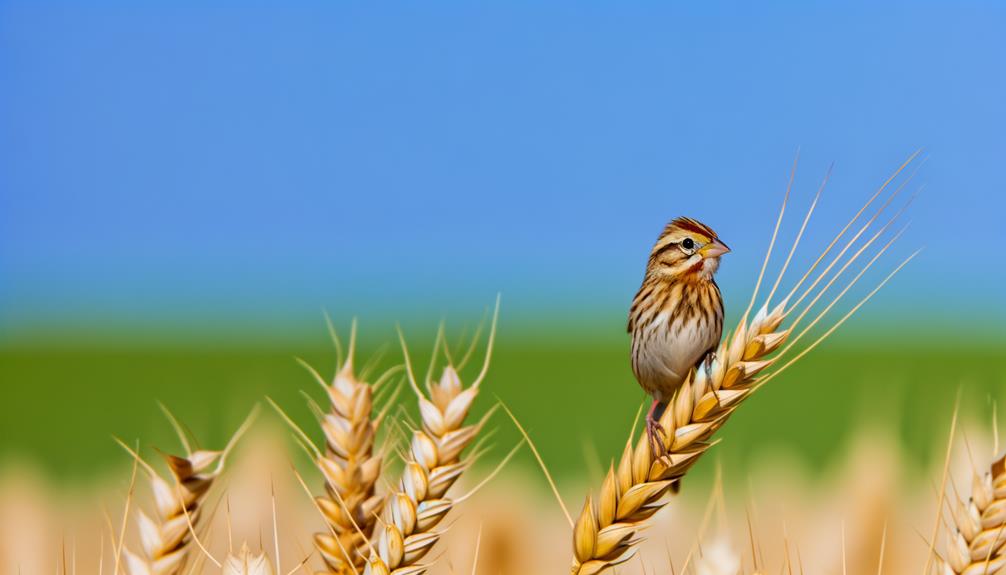
Key Takeaways
- Creative Commons offers free-to-use images of Henslow's Sparrow for educational purposes or awareness campaigns.
- Henslow's Sparrow photos in Creative Commons can aid in species recognition and biodiversity appreciation.
- Creative Commons resources can support public education about the Henslow's Sparrow's distinct appearance and habitat.
- Using Henslow's Sparrow images from Creative Commons can enhance public understanding of the bird's threats from habitat loss.
- Creative Commons materials can assist in crafting effective conservation messages for the Henslow's Sparrow.
Understanding Henslow's Sparrow
Delving into the world of ornithology, one quickly discovers the unique attributes of the Henslow's Sparrow, a small, secretive bird with a distinctively simple yet enchanting song.
Scientifically named Ammodramus henslowii, this sparrow doesn't boast the vibrant plumage of its peers, but rather dons an unassuming mix of brown, black, and white. Its head features a flat crown, with striking olive-green streaks that differ from most sparrows.
Its song, a quiet, two-parted, insect-like buzz, is often overlooked. This bird's body size is diminutive, typically weighing between 13-17 grams, with a body length of 11-13 cm. Its wingspan falls within 18-21 cm, making it a compact specimen in the sparrow family.
Henslow's Sparrow Habitat and Distribution
Exploring the grasslands of North America, Henslow's Sparrow finds its home mainly in tallgrass prairies, old fields, and meadows, favoring areas with dense ground cover and scattered shrubs.
Their geographical range spans from the eastern Great Plains to the Atlantic coast, with pockets of populations in the Midwest. During the non-breeding season, they migrate to the southeastern United States, mainly in the coastal plains of the Carolinas, Georgia, and Florida.
This bird species exhibits a marked preference for habitats featuring a combination of tall grass, low shrub density, and ample litter cover. Their survival hinges on the availability of these specific habitats which are unfortunately dwindling due to agricultural intensification, urbanization, and habitat fragmentation.
Conservation efforts are essential to prevent further diminution of the Henslow's Sparrow's natural habitats.
Identifying Features of Henslow's Sparrow
The identification of Henslow's Sparrow is facilitated by a thorough examination of its distinct physical characteristics, habitat preferences, and behavioral traits.
The bird's appearance is marked by a unique combination of colors, patterns, and size, which distinguish it from other sparrow species.
A detailed understanding of its preferred environments and behavioral patterns will further aid in the accurate identification and study of this bird species.
Henslow's Sparrow Appearance
Sporting a unique blend of subtle colors, Henslow's Sparrow showcases a short tail, an olive-toned head, and a light chestnut patch on its wings, making it a prominent presence in its prairie environment. This bird's petite, rounded body is further highlighted by a compact, conical bill. The eye line, or 'lores', are distinctly yellow. Significantly, its back is marked with black and brown – a form of concealment in its grassland habitat.
Below is a comprehensive table outlining Henslow's Sparrow's key distinguishing features:
| Feature | Description |
|---|---|
| Head | Olive-toned |
| Wings | Light chestnut patch |
| Tail | Brief, stubby |
| Back | Marked with black and brown |
Comprehending Henslow's Sparrow's physical characteristics enhances its recognition and the admiration of its uniqueness in biodiversity.
Habitat and Behavior
In its natural habitat, Henslow's Sparrow exhibits fascinating behaviors and adapts well to grassland environments, displaying an affinity for tall, dense grasses that provide cover and nesting grounds. These sparrows are ground nesters, constructing their nests low in the grass, well concealed from predators. Their behavior is secretive, often remaining hidden in vegetation, making their presence known primarily through their distinctive song.
Moreover, they're mainly insectivorous throughout the breeding season but shift their diet to consume more seeds in the winter months.
Unfortunately, due to habitat loss from agricultural development and urbanization, their populations are in decline. Conservation efforts are vital to preserve these unique habitats and the sparrows that rely on them.
Conservation Efforts for Henslow's Sparrow
Efforts to conserve the Henslow's Sparrow are focusing on habitat restoration and management, given the species' dependence on specific grassland environments. This approach is pivotal as the bird's population has seen a sharp decline due to habitat loss.
The bird's survival is intricately linked to prairie and grassland ecosystems, and it's vital that these habitats are protected and restored.
Key initiatives include:
- Restoration of grasslands: This involves active management of grasslands to maintain ideal conditions for the sparrow.
- Control of invasive species: Invasive species can alter the dynamics of grassland ecosystems and pose a threat to native wildlife.
- Education and Awareness: Public awareness campaigns are essential for garnering support for conservation efforts.
These measures, if implemented effectively, could help optimize the survival of the Henslow's Sparrow.
Role of Creative Commons in Birding
While conservation strategies for the Henslow's Sparrow focus on habitat restoration, there's also a significant role played by platforms like Creative Commons in birding.
Creative Commons licenses allow birders to share their findings, including images and audio recordings, in a public, non-commercial space. This practice of open sharing not only fosters a sense of community among birders but also aids in accurate species identification and tracking.
The data collected in this manner, when analyzed, can provide vital insights into the behavior, distribution, and population trends of bird species, including the Henslow's Sparrow.
It's important to note that while Creative Commons plays a key role in birding, it's the responsibility of each user to respect and adhere to the license agreements.
Impact of Shared Knowledge on Species Preservation
The role of shared knowledge in species preservation is substantial, fostering a collective understanding and awareness of various species' needs and threats.
Effective preservation tactics often emerge from this collaborative knowledge base, yielding strategies that are informed, adaptive, and sustainable.
An examination of the Henslow's Sparrow case study illuminates how shared information within the birding community directly contributed to successful conservation efforts for this species.
Shared Knowledge's Role
Through the power of shared knowledge, we've greatly increased our ability to preserve endangered species like Henslow's Sparrow.
- The collective wisdom of scientists, researchers, and environmental advocates fosters inclusive strategies for species preservation.
- Collaboration platforms allow for rapid exchange of information, including new findings, technological advancements, or changes in species behavior and habitats.
- Public education initiatives spread awareness and encourage individual actions that contribute to broader conservation efforts.
This shared knowledge bridges gaps between different fields of study, unifies diverse groups towards a common goal, and expedites the implementation of effective preservation methods. It also equips the public with the understanding necessary to actively participate in conservation efforts.
As a result, shared knowledge plays an indispensable role in the preservation of species like the Henslow's Sparrow.
Species Preservation Tactics
Harnessing the power of shared knowledge, conservationists employ a variety of tactics to safeguard the Henslow's Sparrow, an endangered species. They've streamlined research, sharing findings globally to refine preservation strategies.
Habitat restoration is essential, requiring detailed knowledge of the sparrow's preferred environments. They're also using captive breeding programs, bolstered by shared insights into the species' reproductive habits.
Greater public awareness is another vital tactic. By educating communities about the sparrow's plight, they're fostering a culture of conservation. This knowledge-sharing extends to policy-makers, influencing legislation to protect the species.
Henslow's Sparrow Case Study
Often, shared knowledge plays a pivotal role in preserving endangered species like the Henslow's Sparrow, as illustrated in this case study. Scientists, conservationists, and the public have joined forces to share critical information about the bird's habitat, behavior, and threats it faces. This collective effort has led to the development of targeted preservation strategies and public awareness campaigns.
The key findings of the case study include:
- The importance of habitat preservation: The Henslow's Sparrow requires specific grassland ecosystems to thrive.
- The role of public education: Raising awareness about the bird's plight has motivated protective measures.
- The impact of scientific research: Detailed studies of the Sparrow's habits and needs have guided conservation efforts.
Conclusion
The story of the Henslow's Sparrow is a testament to the power of collective wisdom in preserving our biodiversity. With over 90% of the population of Henslow's Sparrow plummeting in the last five decades, conservation efforts are vital.
Creative Commons aids in these efforts by fostering a birding community that shares knowledge and resources. This collaboration can potentially improve the sparrow's survival rate, highlighting how shared knowledge can indeed be a lifeline for endangered species.


